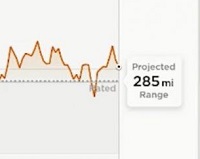I know this means nothing in reality, but my MS 90D with 95,000 miles still shows 300 miles of range when charged to 100% (like when brand new). In the real world, I average closer to 225.
I have seen most people say that their range shows closer to actual miles with degradation.
Anyone else have this scenario? Anyone know why Teslas act my way and others a different way?
I have seen most people say that their range shows closer to actual miles with degradation.
Anyone else have this scenario? Anyone know why Teslas act my way and others a different way?



